*글 하단의 '한국어 텍스트 다운로드'를 클릭하면 원문을 확인할 수 있습니다.
In a panoramic view of the forty years of Shin Sung Hy’s oeuvre, the Solution de Continuité series can be stylistic located in between the minimal and maximal works. These are unique works of cutting colored canvas into long strips that are then attached by backstitching thus referred to as “backstitch canvas painting.” In terms of the progression of Shin’s different styles, this series lies between his early monochrome jute paintings and the late Nouage works that weaved vibrant colors.
These backstitch paintings emerged in the early 90s as colored canvas cut into uniform sized strips then stitched together with a sewing machine to form a picture plane. But, as visible in this exhibition, the shape of the canvas can be surprisingly unconstrained. As the color strips, approximately one to five centimeters in width, are torn apart then joined to construct the picture plane it can be said they are deconstructed only to be reconstituted. One can observe this process elsewhere such as in Shin’s collages and Nouage works that also reconstitute the frame through an initial abstract work of color dots and stains on cardboard or canvas base followed by ripping and cutting, weaving and tying. The attributes of Shin’s paintings overall, then, are deconstruction and reconstitution.
What unique message, then, does the Solution de Continuité series assume? One can certainly find the artist’s acute examination of composition in painting that is unmatched in other works. Backstitch paintings center on the interrelations between the surface of painting and the frame as a physical structure that supports it. It is thus an example of maximizing the two-dimensionality of painting without breaking out from the frame.


The artist highlighted the rough seams at the adjoined side where he cuts protruding joints of stitching with a knife. The shadows from these seams of canvas fabric constitute a real space and coexist at a site of the visual. This amounts to the extreme polarities of painting’s visual field and its real space sharing a single canvas attached next to one another. These two form the same picture plane in subtle tension and balance, neither oppressing the other nor concluding in an alternate, amalgamated state.
The term “golden mean” comes to mind when trying to describe such composition and style. The aesthetic signification of the golden mean in Shin’s painting designates the balance between picture plane and space, illusion and reality, spirit and material. The composure brought on by such balance is accompanied by the tension of two ends pushing back against one another, yet their conflict and collision remains intriguingly undetectable. Perhaps it can be attributed to that “Eastern effect” as Japanese art historian Fumio Nanjo refers to, where the standoff between two-dimensional plane and three-dimensional constructions are “sublimated” to “provide an alternative of an entirely different dimension that may be called an Asian, or Eastern, effect.”1) However, one cannot clarify the distinction between dialectical synthesis and the sublimation in Shin’s works solely by observing their finished results. Furthermore, the artist himself described his works as “a visual language that merges you and me, material and spirit, affirmative and negation, dialectical conflicts.”2)
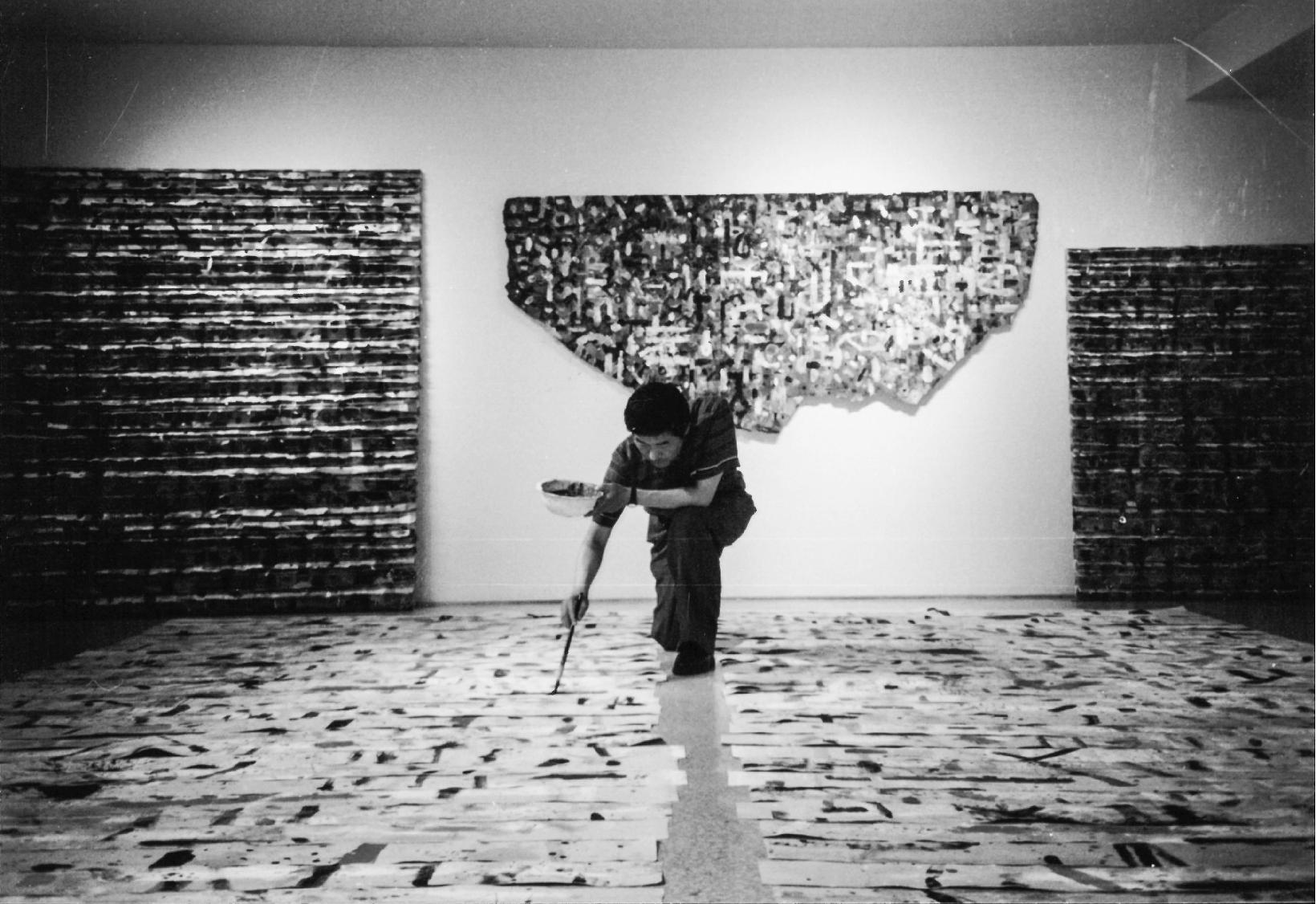
Therefore, the Eastern effect that Fumio Nanjo acutely sensed yet could not delineate should be located in process rather than result. Consider that the contending positions ascribed to opposite poles never constitute a state of antagonism, collision, or conflict. Seeing this as Shin’s Korean (Eastern) disposition, one can at least note certain differences when comparing to Western dialectics. Following his analysis, the two polarities do not mitigate each other and resolve themselves into a single synthesis but coexist in acceptance of their opposing characteristics. Solution de Continuité exemplifies this stylistic language.
Emanating vibrant colors and maximal expressions coexist with a strictly streamlined two-dimensional composition in these unique works. The dynamic expansions of color and materiality of the amorphic have been caught and settled in the vertical and horizontal skeletons of the canvas. Colors go about their way to expand spatially, while skeletal structures of stitching insist on its stability in constituting the frame. The coexistence of heterogeneous poles without conflict nor complete amalgamation of the two ends, neither subsumed or integrated into the other, preserved in coexistence - this balanced golden mean is the most important aesthetic innovation of Shin’s painting language. Through his work we realize that a third way is possible, one that does not involve clear contention in dichotomy nor sacrifice of individuality.
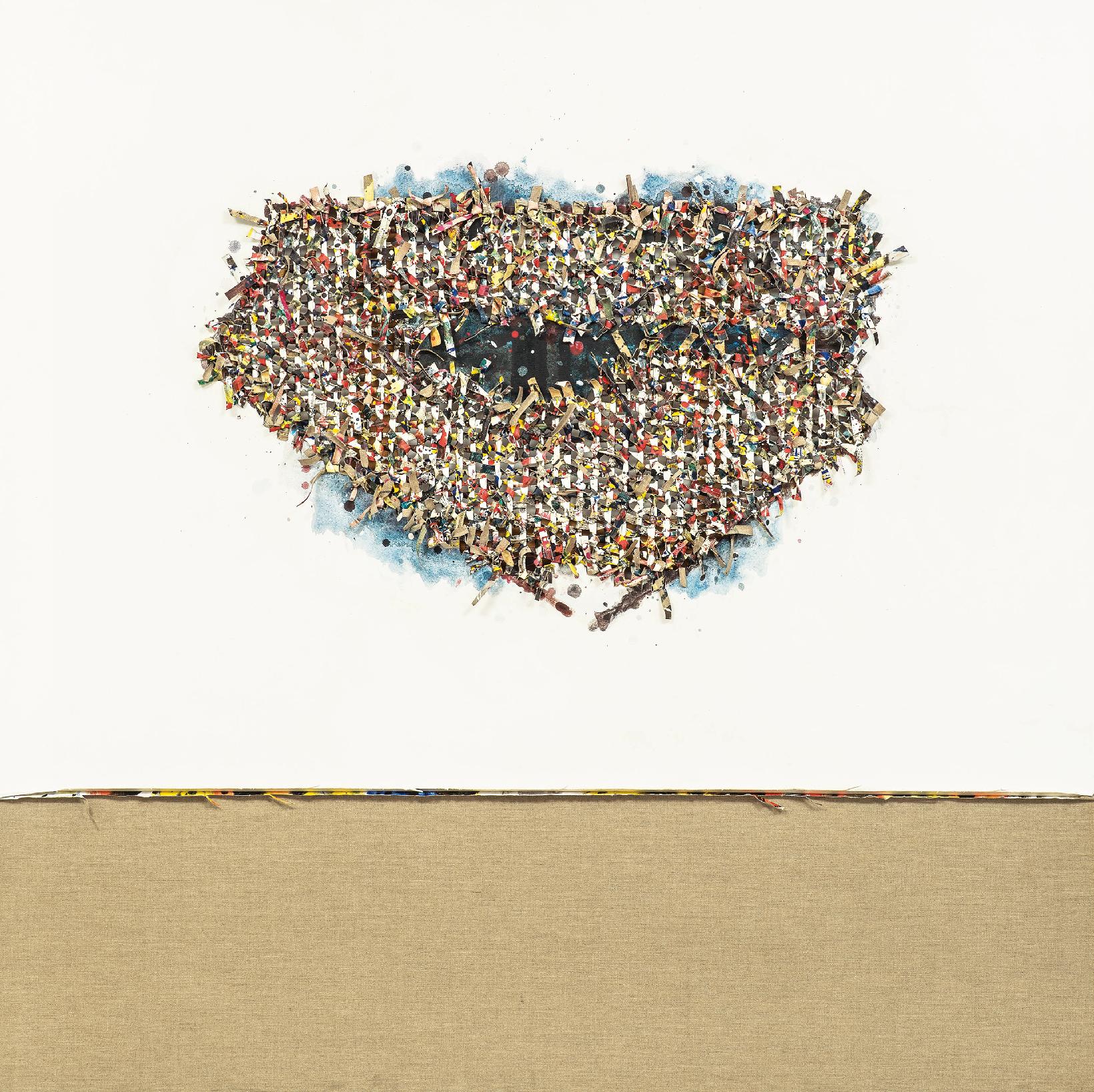
These consistent aesthetic features manifest themselves in different modes at each stage of his work. In the monochrome paintings of the 70s that depicted hyperreal jutes upon jutes appear the opposition between the “hyperreal” and “minimal.” Whereas in the 80s collages of ripped and glued cardboard paper that progressed towards abstraction featured the heterogeneous materiality of cardboard on one end and the generalizing modernist vision of abstract painting on the other. In the stitched canvases of the 90s, the monochrome flat planes against the real space of the stitched canvas fabric. In the Nouage works of the 2000s, the substantiality of the gaps and holes created by nets as reaction against the visual plane of a color field allow both sides to maintain a sense of independent coexistence. (Translated by Haena Chu)
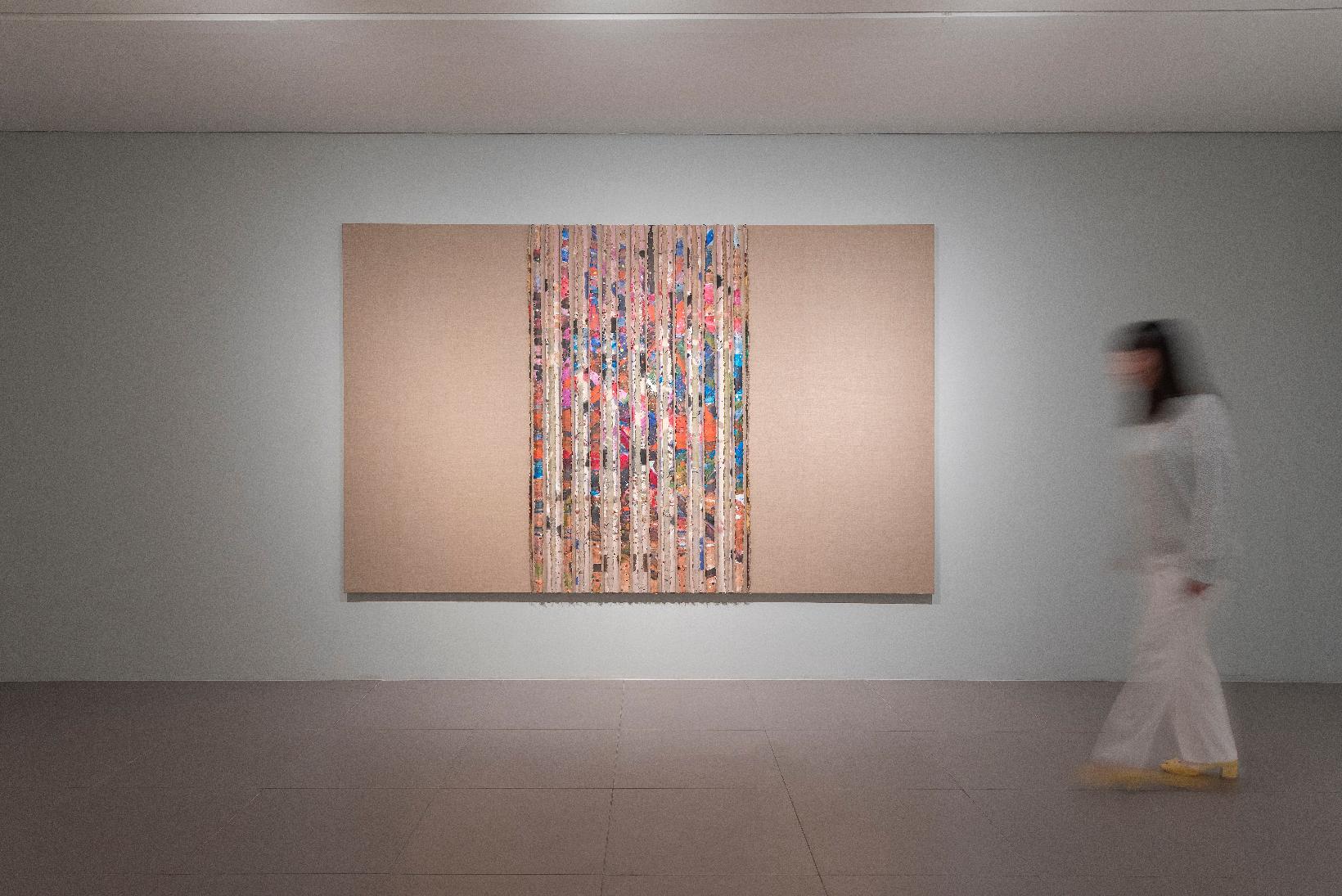
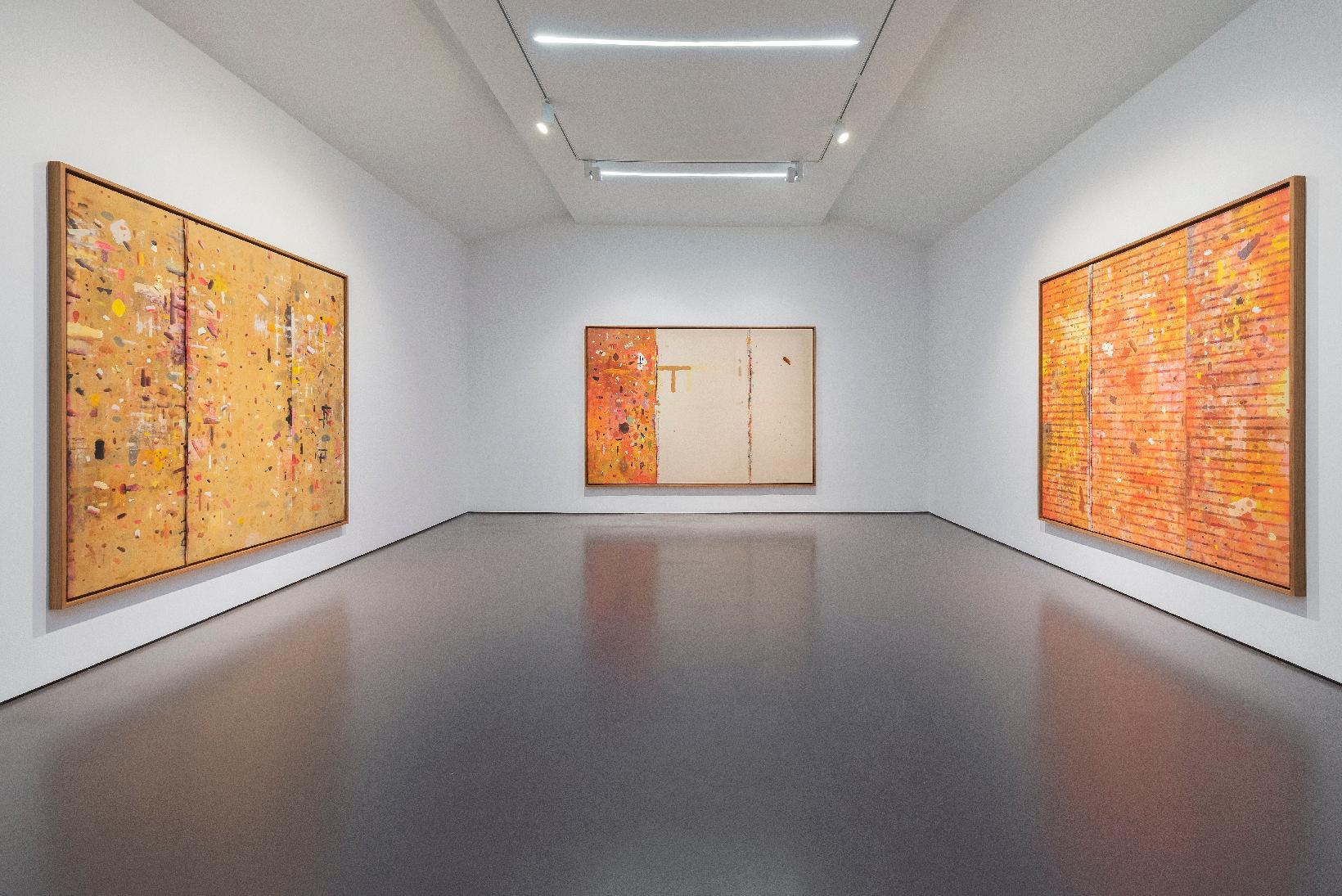
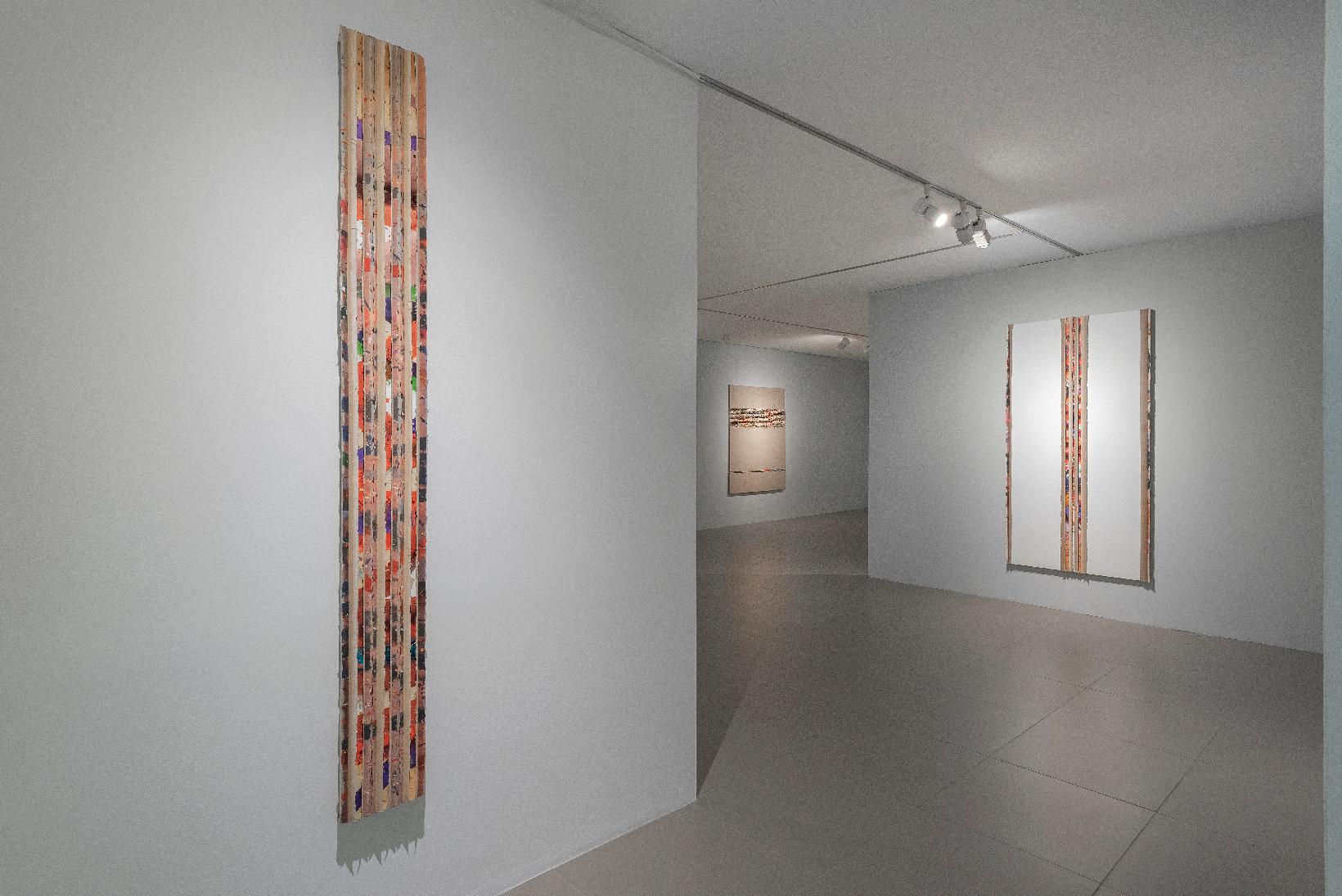
Young Paik Chun is a Professor, School of Arts at Hongik University
This essay from the exhibition catalogue of Shin Sung Hy - Solution de Continuité at Gallery Hyundai
1) “The Art of Shin Sung Hy: Weaving Life into Eternity”, Nouage (catalogue for Shin Sung Hy’s solo exhibition), Gallery Hyundai (2010. 9.10 – 10. 31), 2010, p.44. In Fumio Nanjo’s critique, however, one cannot clarify in which specific aspects Shin Sung Hy’s work aesthetic differs as “Eastern” from the thesis-antithesis-synthesis dynamic of Western dialectics.
2) Shin Sung Hy. Gallery Hyundai Solo Exhibition Catalogue, 2001